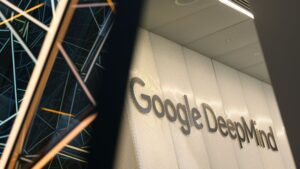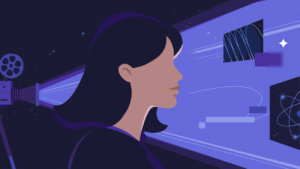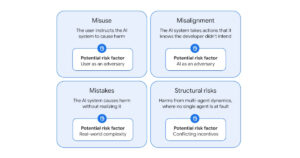Exploring Distributed Training for Large AI Models by DeepMind

The Future of AI: Distributed Training
What is Distributed Training?
Distributed training is a method used to improve the efficiency of training artificial intelligence (AI) models by leveraging multiple computers or devices. As AI models become increasingly complex and data-intensive, traditional centralized training methods are facing challenges, including high costs and extensive resource requirements.
The Impact of DeepSeek
The recent release of DeepSeek, an AI model developed by DeepMind, sparked discussions in the tech industry about the potential of distributed training. DeepSeek demonstrated comparable performance to models from established companies like OpenAI and Meta, but at a claimed lower cost and using fewer Nvidia GPUs. This claim has stirred debate, but it has undoubtedly prompted industry leaders to reconsider their approach to training AI models.
The Challenges of Traditional Training Methods
Training large AI models typically requires thousands of GPU accelerators housed in massive data centers, which are expensive to build and maintain. As AI technology evolves, the need for improved networking and cooling systems becomes increasingly pressing. Moreover, orchestrating the training process across multiple devices poses significant software engineering challenges, including ensuring that all devices are fully utilized and that data synchronization occurs seamlessly.
Innovations in Distributed Training
DeepMind’s research has focused on enhancing the efficiency of distributed training, particularly with its approach called DiLoCo (Distributed Low-Communication Training). A recent paper titled "Streaming DiLoCo with Overlapping Communication" elaborates on modifications to this method, aiming to make training possible on "islands of devices that are poorly connected."
Key Benefits of Streaming DiLoCo
- Reduced Bandwidth Requirements: The modified method requires significantly less network bandwidth—up to 400 times less—while maintaining similar performance levels to traditional data-parallel methods.
- Flexible Synchronization: Instead of synchronizing all parameters simultaneously, Streaming DiLoCo schedules synchronization for subsets of parameters, which aids in lowering network traffic.
- Optimized Communication: The technique overlaps computation with synchronization, enhancing efficiency and minimizing delays in data transmission.
The Broader Industry Impact
Prominent figures in the AI community, like Jack Clark, co-founder of Anthropic, highlight the importance of DiLoCo and its variants. They note that distributed training could pave the way for democratizing AI development, allowing smaller entities to train models that are competitive with those from larger corporations. This suggests a future where AI innovation is not restricted to companies with vast computational resources.
Expert Insights on Distributed Training
Chirag Dekate, a Gartner analyst, discusses the advancements in distributed training methods like quantization and overlapping techniques to mitigate issues arising from memory and bandwidth limitations. He emphasizes that these innovations contribute to greater scalability and efficiency in utilizing AI supercomputing resources.
Future Development Directions
Despite acknowledging the progress made with Streaming DiLoCo, DeepMind researchers consider it just a starting point. They emphasize the importance of continuing research to explore how these methods can be fine-tuned and scaled effectively for large-scale training sessions. They also suggest that insights from federated learning could be instrumental in shaping new strategies for distributed training of large language models (LLMs).
In summary, as the tech industry evolves, distributed training is increasingly viewed as a promising approach for developing AI models more efficiently and affordably. With ongoing innovations and adjustments, it could significantly alter the landscape of AI development, breaking down barriers created by resource limitations.






